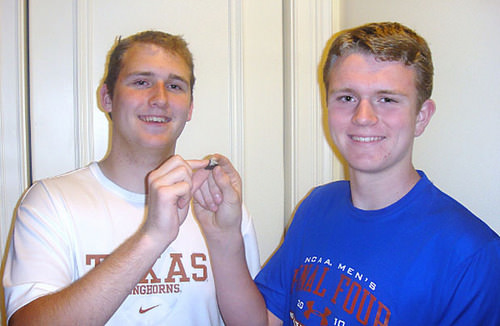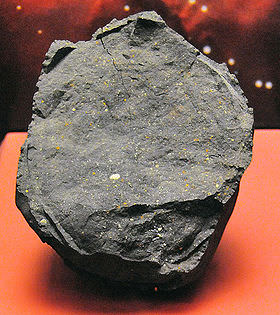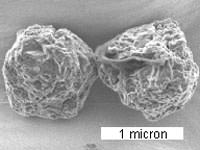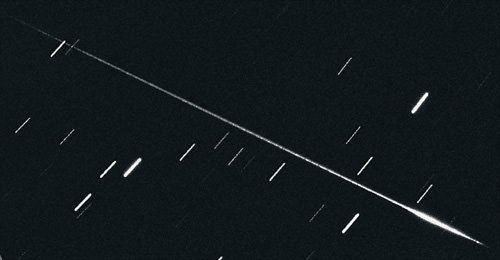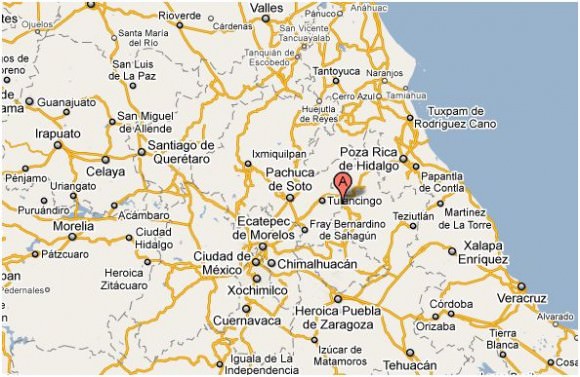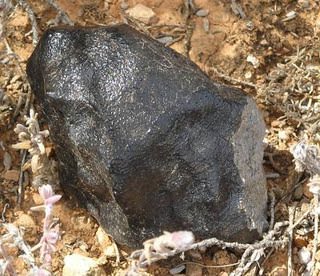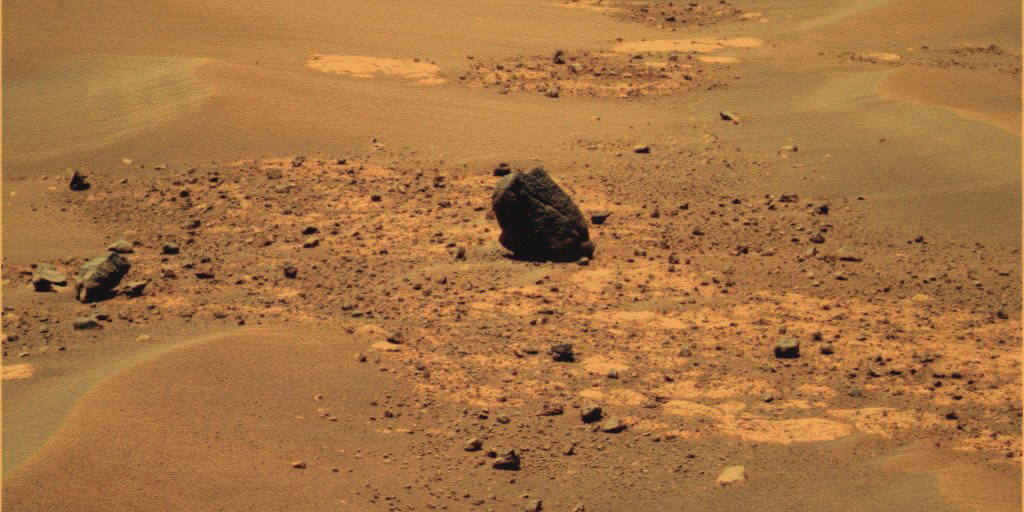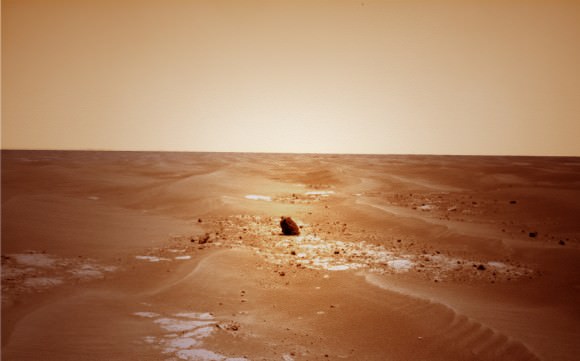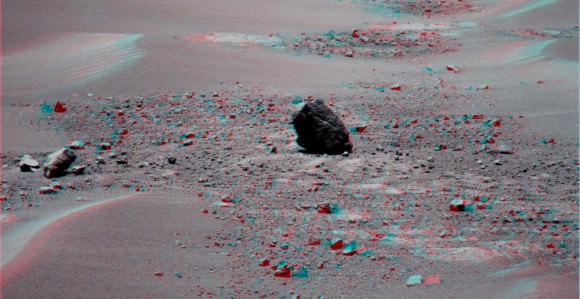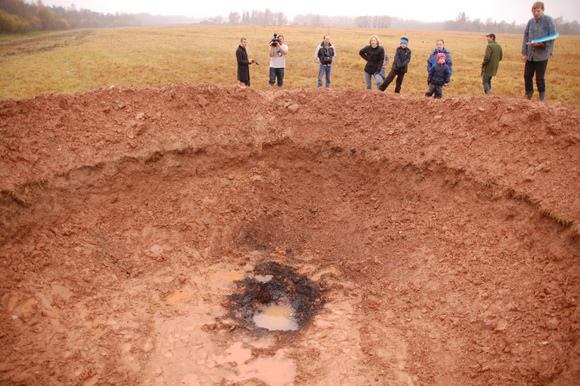[/caption]
Via the Astro Bob and Rocks From Space websites comes news that the first meteorite has been recovered from the spectacular fireball that was seen over seven states on April 14, 2010. Brothers Christopher and Evan Boudreaux from southern Wisconsin located a piece of what was likely a meter-wide space rock, according to NASA’ Near Earth Object office. Astro Bob said that pieces of meteorite from Wednesday night’s amazing fireball appear to have fallen over the Livingston, Wisconson area between Platteville and Avoca. If you’re in that area, maybe you’ll have time to do a little meteorite hunting this weekend. But always get permission before going on any private property.
The image above, as well as a close-up of the meteorite, below, are courtesy of Michael Johnson, who hosts the Rocks From Space website Johnson said that according to Mike Farmer, a professional meteorite hunter, the meteorite appears to be an H chondrite.
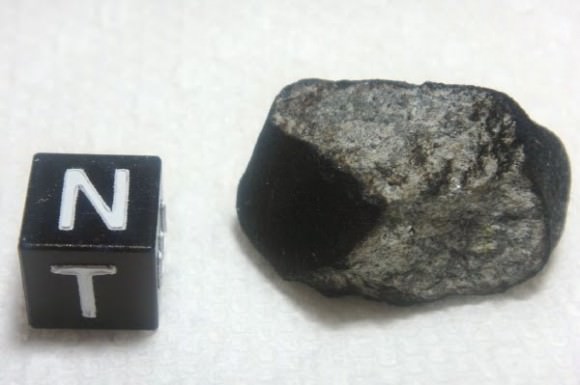
Astro Bob indicated there is a meteorite for sale on e-Bay claiming to be from the April 14 fall, but it is not, so beware.
According to NASA’s NEO office, data collected by scientists at NASA’s Marshall’s Space Flight Center in Huntsville, Alabama indicate the parent body of the fireball was not associated with the Gamma Virginids meteor shower, which was taking place at the time the fireball entered the atmosphere. Instead, the small space rock more than likely originated from somewhere in the asteroid belt.
The head of the NEO office, Don Yeomans, said that when the fireball disintegrated high in the atmosphere, it released energy equivalent to the detonation of approximately 20 tons of TNT.
“Knowing the size of this small asteroid helps us determine the frequency of such occurrences,” Yeomans said. “Asteroids this size are expected to enter Earth’s atmosphere about once a month.”
Here’s a mash-up of webcams, dashboard-cams etc. that captured the fireball.
Sources: Astro Bob, Rocks From Space, NASA’s NEO office, JPL

